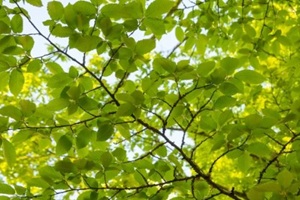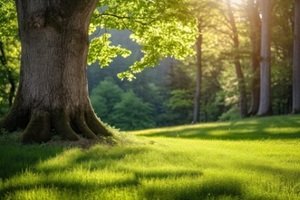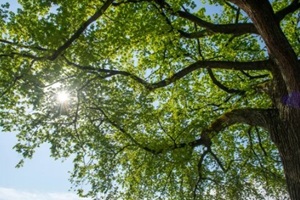
Elm trees, with their iconic high canopies, have long been celebrated for their graceful beauty as they line the streets and properties of Virginia’s rural and suburban landscapes, providing shade, seasonal beauty, and shelter for residents and wildlife. In autumn, they are easily identified by their vibrant yellow, gold, or red leaves.
Despite their enduring legacy, elm trees are vulnerable to many stresses, including common diseases, pests, and weather conditions, particularly in Northern Virginia. Certain elm trees may also require specific care to thrive.
This article highlights the types of elm trees that need extra care in Virginia, including the stresses that impact them the most and the tree services that can help preserve their beauty with long life.
American Elm
Of the elm varieties, it is the American elm that is especially vulnerable to common fungal diseases. Fungi like Ophiostoma ulmi infect the vascular system of the American elm, spreading throughout its root grafts and killing it. This disease is so pervasive, it has been given the name Dutch Elm Disease, and can kill a mature American elm in as little as a year.
Extra care is required to keep these trees healthy as well as prevent the spread of infections to other plants on the property. Out-of-season wilting or yellowing is an early warning sign of disease; so are brown streaks inside the wood and branches that fall off prematurely.
Proactive tree services for American elms should include regular pruning, sanitation checks, and disease monitoring. If an infected branch is spotted, it should be removed as quickly as possible. Trees with a known infection may require full removal to prevent the fungi from spreading.
Cedar Elm
Although cedar elms are naturally less common in Virginia, many nursery programs plant these trees to enhance landscapes. Like American elms, cedar elms are susceptible to Dutch Elm Disease, while also fighting other illnesses and pests.
These trees are susceptible to elm leaf beetles, which destroy healthy growth in all elm trees, though European varieties like Siberian elm are particularly susceptible. Additionally, mistletoe infestations can wreak havoc on the growing structures of elm trees.

Mistletoe is well-known for its seasonal beauty, but it is also a parasitic plant that can stunt the growth of otherwise healthy elm trees and even kill adult ones. It does this by weakening the tree’s tissues through its own overgrowth, inviting structural damage and other pests.
To prevent this issue, cedar elms require specific manual care services, including mistletoe screening and removal. Tree service professionals will know what to look for.
Chinese Elm
Chinese elms, as the name suggests, are not native to Virginia. However, they are often planted in Northern Virginia landscapes as a replacement for American elms due to their inherent resistance to the native causes of Dutch Elm Disease.
Additionally, Chinese elms tolerate compacted soil well, which improves their chances of survival in the Virginia winters. Young Chinese elms can be susceptible to cankers, but most diseases pass over healthy adults.
Only boring beetles, moths, and scaling insects like white prunicola scale tend to affect Chinese elms. Preventing these pests from taking over the tree requires active maintenance. The sooner the signs of these dangerous pests can be recognized, the better the chance the tree can fully recover.
Hybrid Elms
Hybrid cultivars of common elms from America, Europe, and Asia can resist Dutch Elm Disease, making them more attractive for residential landscapes. However, this does not make them impervious to threats impacting all elm breeds, including defoliation by infestations of elm leaf beetles.
Other threats, like canker diseases, anthracnose, powdery mildew, and spongy moths, will still impact their health. These fungal diseases and pests can be spotted through their warning signs, such as sunken areas of discoloration in branches, as is the case with canker diseases. However, once a disease visually manifests, it may be too late to save the tree.
The key for property owners, especially in Northern Virginia, is to enforce a system of proactive maintenance with consistent professional tree services. This includes regular inspections and disease risk assessments by accredited arborists familiar with the afflictions that commonly impact elm trees.
Partner with Experienced Arborists to Protect Elm Trees in Northern Virginia

Elm trees fan out in towering canopies, providing beauty, strength, and shade to landscapes across Virginia. However, these beautiful trees often require extra attention due to common tree diseases, pests, and fungi that prey on healthy hardwood trees throughout the state.
At RTEC Treecare, our experienced arborists conduct thorough disease risk assessments to help property owners maintain their landscape’s beauty and value. While recognizing the visual signs of tree disease is a valuable step in protecting the rest of the landscape, many homeowners lack the experience to recognize risk factors before diseases spread throughout the tree’s systems. Saving valuable trees often requires tree services that include regular maintenance and experienced observation to stop diseases before they become fatal.
Contact our experienced arborists to learn more about safeguarding your valuable elm trees.


